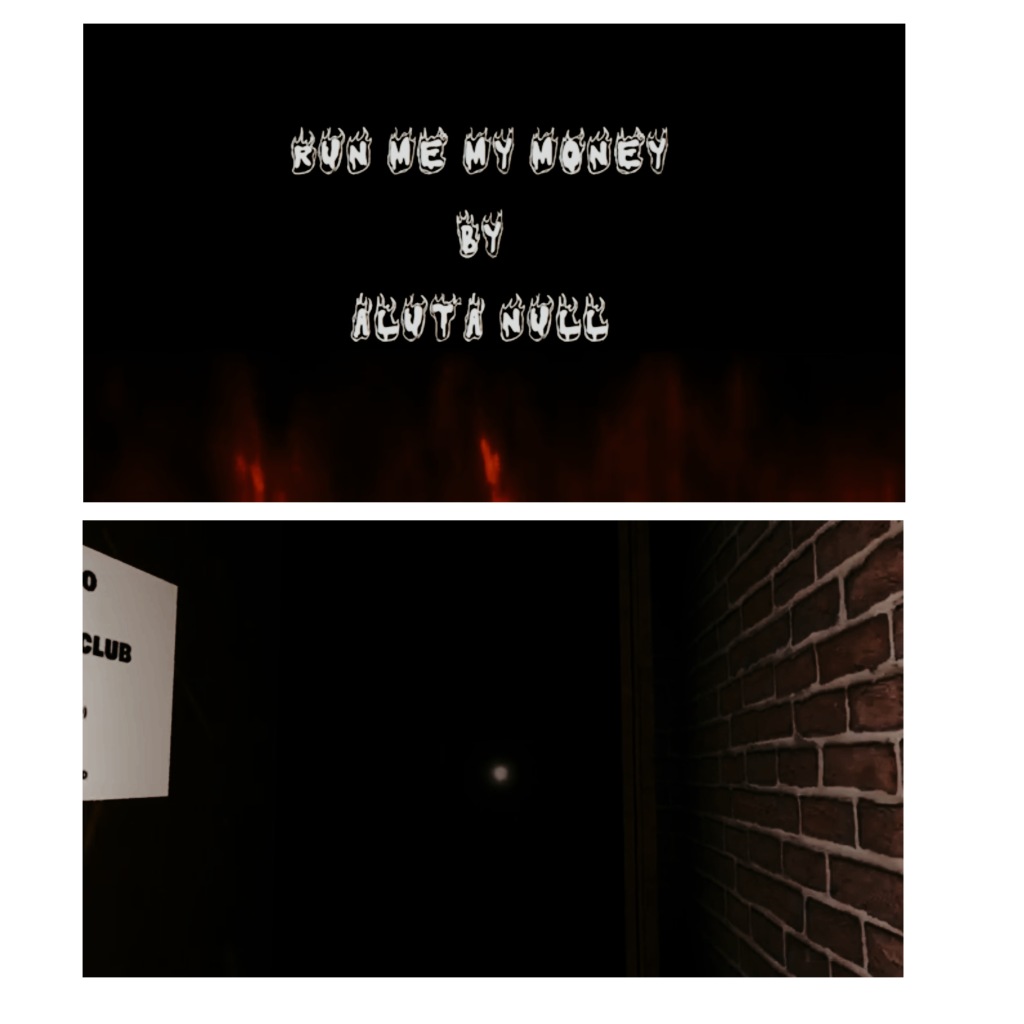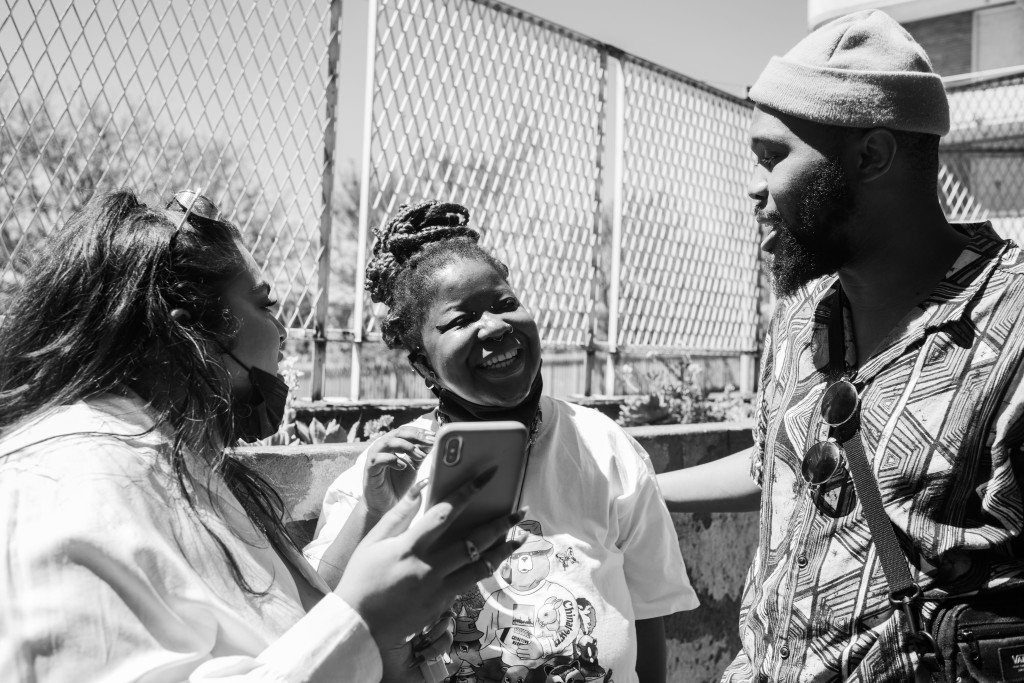
The first use of the term digital art was in the early 1980s when computer engineers devised a paint program which was used by the pioneering digital artist Harold Cohen. Digital art can be computer generated, scanned or drawn using a tablet and a mouse. In the 1990s, thanks to improvements in digital technology, it was possible to download video onto computers, allowing artists to manipulate the images they had filmed with a video camera. This gave artists such as Richard Hamilton and David Hockney, creative freedom never experienced before the film, allowing them to cut and paste within moving images to create visual collages. In recent times, digital art has become even more interactive, allowing the audience a certain amount of control over the final image.
I thought of this when I saw Aluta’s recent exhibition called PHANTOM. As described by them, their work combines the physical and digital and deals with difference, politics, perception, feelings and imagining extremes. Aluta has the ability to draw you in and make you feel part of their work or the digital art experience which the latter often has limitations on. It is important to mention that Aluta also uses realistic, honest and tangible events to bring forward underlying issues such as mental illness and uses themes of self destruction. This month, we talked to ALUTA NULL, who is a digital artist and game designer based in Johannesburg, South Africa about their AR piece called PLEASE STOP WATCHING MY BREAKDOWN, gaming and the first thing they do in the morning.
TAIV: Please tell us a bit about your history with visual art. What were your earliest memories?
ALUTA NULL: I’ve always loved art and I was always hearing the word ‘creative’ used a lot as a kid when adults spoke about me. It was truly nothing I ever paid serious attention to. The love for visual art has always been there and my baby steps in playing around with it started when I was around 6. I just enjoyed creating things that could depict a physical translation of some of what was in my head. I started out making dumb illustrations, then moved on to writitng, then tried my hand at photos and filming and blogging, and now here was are making video games, and other forms of digital art. At 11 years old, I would make my own magazines out of image cutouts and cool writing then make multiple issues and copies for my family. Those were definitely all destroyed by me at some point. So I’ve always been into creating my own fun and ultimately just playing and experimenting.
TAIV: You described your work as “digital art about destruction” in your recent post on twitter. Can you please elaborate on that.
A.L: So the video clip that was attached where I said that was for an AR piece I made called PLEASE STOP WATCHING MY BREAKDOWN. It’s a video played on an old broken TV and the video itself showcases the TV attempting to start up and switch on, failing to do so, repeasting, breaking the fourth wall and asking its audience to stop watching, and then eventually having a breakdown and spewing a compilation of cartoon crying clips. Similarly to how I’ve often felt like I broadcast my breakdowns on the internet at uncontrollable times and other people do so too, it just got me thinking a lot about destruction and audiences. So when I say ‘destructuction’ I’m referring to actual emotional and mental destruction and the kinds of themes that arise when those are used for art inspiration, as well as physical and digital destruction due to my newest interest being that of playing with what I refer to as DEAD THINGS (old, broken, and unusable devices). So I speak about ‘destruction’ in many senses. If I’m not referring to the self or a system, I’m referring to an object.

TAIV: It is incredible that you have the ability to merge the essence of gaming or games into your work. Do you find it to be a useful medium for the various themes and ideas you’re interested in exploring?
A.L: My degree in Game Development is my saving grace for so many reasons, because creating games is a huge task that requires such close attention to be paid to the tiniest things because each element has a tremendous impact on the game dynamics.It’s a medium that I love and am so grateful I am skilled in, because one of the most exciting parts about it is the very unique feature that not many other art spaces have which is interaction. Choosing to include interaction is a big thing. And similarly, not including interaction is also a big thing. Because I have the ability to do both, it forces me to interrogate why a piece of art that I make is not interactable or why it is. The interaction aspect of games helps me communicate so many things that I really wouldn’t be able to communicate otherwise. For example, I made a game about a traumatic experience I went through and used substances to cope. Because the game had the element of interaction, I was able to immerse the player even deeper into the chaos of the story and make them feel the same kinds of conflicts I felt through forcing them to make tricky decisions. I love games, man. A lot. They’ve really done a lot for how I can express myself.

TAIV: You recently had an exhibition called PHANTOM. Can you please tell us about the making of it? (interviewers note: I personally enjoyed the audio used at the exhibition)
A.L: Thank you so much. The audio was from a former love interest in the movie of my life who I had collaborated on for this. I wrote the script and added effects. He absolutely killed the voice acting. There’s a production company run by a friend of mine called Kamo and the company is named HOMIE MADE MOVIES. I love that idea of not only the movies being home-made or having the energy of DIY but that the people involved are also just a group of friends. It was the same for this exhibition. It was 110% a homie made exhibition. A lot of the interesting parts of the exhibition were spontaneous moments built when my friends visited me in the studio. To explain the actual creation of the works would require a full day interview (haha) because it was a month of sleepless nights and extreme experimenting. I also just prefer to not show or explain to people how I do things because my mind works in weird ways and it’s not fun trying to explain it.

The opening of the PHANTOM virtual reality exhibition
TAIV: Mental health and or mental issues often feature in your work. How important is it to you as an artist to explore this theme into your work?
A.L: It’s important in the sense that it helps people realize that the dark things that they go through are experienced by others. But in all honesty, it’s really not like I’m trying to inspire people or anything – and I know that this sounds bad. But I don’t make art for other people. I make art for myself, as a way of expressing, or commenting on things I’ve observed, or complaining about something that’s frustrating me, or presenting ideas I’ve been contemplating for a long time. So I rarely ever think about the importance of my work for other people and what impact it could or should have, which is likely why I think I feel like an imposter so much of the time – because I don’t expect people to care about my work the same way I don’t really care about them when making it. It makes me feel good when people relate and find my stuff dope but that’s only because I was never thinking about them and it’s cool to know that there is someone who understands a small part of my mind or finds it interesting.
TAIV: Would you say that the themes of virtual reality within art are a form of escapism?
A.L: They could be. They could also be a form of adventure.
TAIV: Your video called Run Me My Money was set in V.R. and is cleverly located at a nighttime club. What kind of themes were you exploring within the film?
Firstly thanks for being aware of RUN ME MY MONEY because it was at TMRW Gallery for so short so I sometimes forget that other people have actually seen it (haha). RUN ME MY MONEY was designed in VR and intended to have VR headsets but the experience ended up being turned into video instead. As I mentioned earlier, I make art for and about myself. My safe space as an artist has been built through telling the truth but calling it fiction because I have something to hide behind. At the time I made RUN ME MY MONEY, I was fresh out of my Wits degree and hungry for money and feeling like I was owed a lot and not being given it. Entitled, I know. But I was frustrated. So I created RUN ME MY MONEY which is a fictional underground club that archives conversations around Black women confidently demanding what they’re owed. Because that was the kind of imagery and voices I needed to hear at the time. RMMM deals with financial liberation, sex, menstrual healthcare, and autonomy. It was set in a club because I love the political cuteness in club culture and how revolutionary club culture can be. So why not put revolutionary ideas in an unconventionally revolutionary setting?

A screen grab from Aluta’s V.R RUN ME MY CHECK
TAIV: You collect old or broken gadgets. Are they going to serve as a part of a body of work or are they going to be part of a larger archive?
A.L: Both!!!!!!!!!!!!!!!!!
TAIV: What would you advise your younger self in regards to creating?
A.L: Don’t talk so much
@AlutaNull with art director @ByLwansta at the PHANTOM opening in October in Johannesburg.

